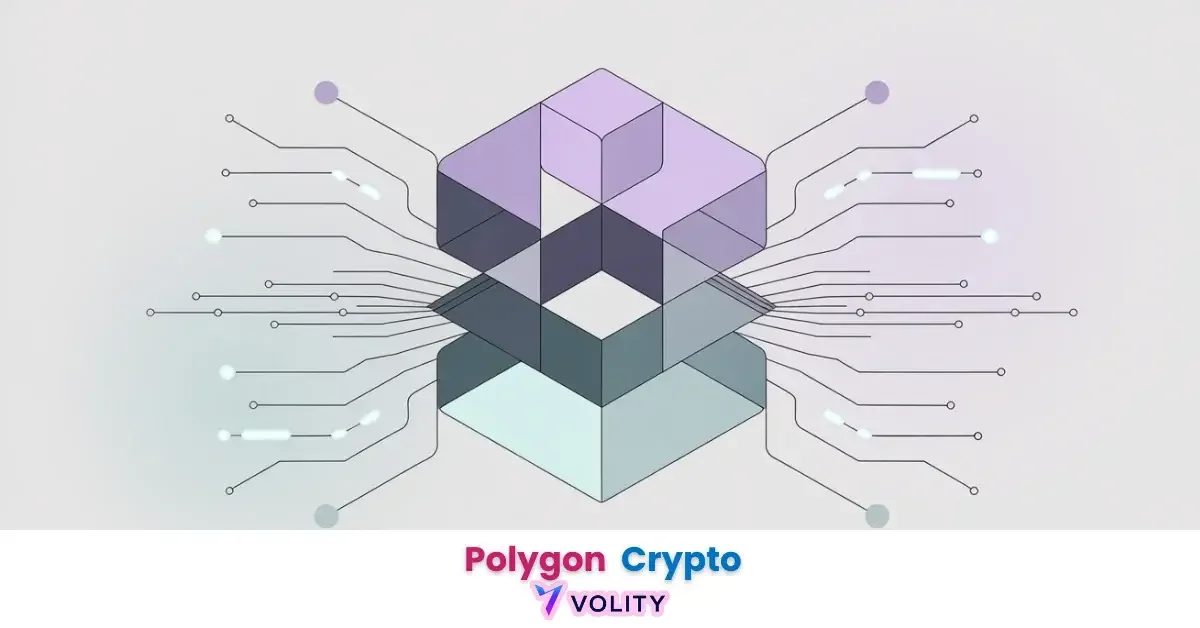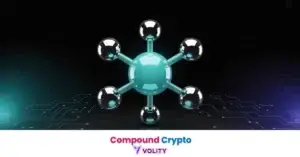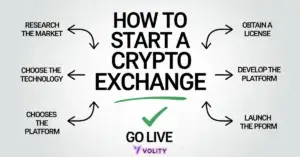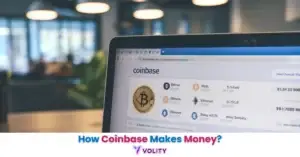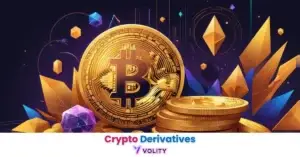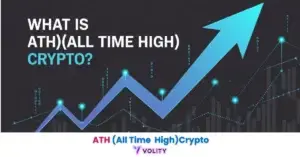Polygon (POL) is a blockchain platform. It makes Ethereum faster and cheaper. It started as Matic Network in 2017. The goal was to solve Ethereum’s problems. See, these problems include slow transactions and high fees. Polygon works as a Layer 2 solution. It sits on top of Ethereum to improve scalability. Why is this important? Ethereum is powerful but faces challenges due to high demand. Polygon helps by processing transactions off the main Ethereum chain. This speeds up transactions and lowers costs.
The POL token plays an essential role. You use it to pay fees and help secure the network. It also gives you voting power to govern Polygon. Polygon does more than scale Ethereum. It connects different blockchains. This makes them work together smoothly. Developers use Polygon to build decentralized apps (dApps) without worrying about high fees or slow speeds.
Polygon offers scalability, speed, and cost efficiency.
How Does Polygon Work?
Polygon boosts Ethereum’s performance. It operates as a Layer 2 solution. This means it works alongside Ethereum. It improves its speed and reduces costs. Polygon processes transactions off the main Ethereum blockchain. It then sends the data back to Ethereum for final validation. Why is this important? Ethereum struggles with scalability. As more people use it, transactions slow down. Fees rise. Polygon solves these problems. It helps Ethereum handle more transactions quickly and cheaply.
Polygon uses sidechains to handle transactions. These sidechains are separate blockchains that run alongside Ethereum. They do most of the work, which makes things faster. If needed, they send information back to Ethereum. Polygon also supports zk-rollups and Optimistic rollups. These technologies bundle multiple transactions into one. This makes processing faster and cheaper.
In short, Polygon helps Ethereum scale. It speeds up transactions and lowers costs. Does this sound like what Ethereum needed?
How do you use the Polygon network?
Using the Polygon network is easy. First, set up a wallet. MetaMask and Coinbase Wallet work well with Polygon.
- Next, bridge your tokens to Polygon. You’ll transfer your Ethereum-based tokens using Polygon’s bridge. It’s quick and simple. Once your assets are on Polygon, you’re ready to start using dApps.
- You can use decentralized exchanges like QuikSwap.
- You can also explore NFT marketplaces like OpenSea. Polygon’s low fees make trading and interacting easy.
- You don’t need to worry about high costs. Want to earn rewards? You can stake POL tokens. Select a validator and delegate your tokens. In return, you’ll earn rewards for helping secure the network.
In short, set up your wallet, bridge your assets, and start using the Polygon network. Ready to dive in?
Advantages and Disadvantages of Polygon
Advantages
- Faster Transactions—Polygon processes transactions much faster than Ethereum, which reduces delays.
- Low Transaction Fees—Enjoy minimal fees compared to Ethereum. It makes transactions more affordable.
- Ethereum Compatibility—Polygon works seamlessly with Ethereum. It allows easy integration and migration.
- Scalable Solutions—Offers multiple scaling options like sidechains, ZK-rollups, and Optimistic rollups.
- Developer Flexibility—Developers can choose from different protocols to meet specific needs for their projects.
- Secure and Decentralized—Polygon uses a Proof of Stake consensus.
- Growing Ecosystem—Many projects, from DeFi to NFTs, are adopting Polygon, increasing its utility.
Disadvantages
- Dependency on Ethereum—Polygon relies on Ethereum for security and validation. Any issues with Ethereum could affect Polygon.
- Limited Use for POL Tokens—POL tokens mainly serve for governance and staking. They’re not widely used for everyday transactions.
- Network Risks—Like any blockchain, Polygon is not immune to security risks and potential bugs.
- Competition—Polygon faces stiff competition from other Layer-2 solutions like Arbitrum and Optimism.
- Still Evolving—Polygon is continuously developing, so some features may not yet be fully realized or stable.
Would you consider Polygon’s strengths more appealing than its drawbacks?
Polygon’s key innovations
- Modular Blockchain Solutions: Polygon offers multiple scaling solutions. It allows developers to choose the one that best fits their needs. Options include sidechains, ZK-rollups, and Optimistic rollups.
- Interoperability—Polygon connects Ethereum with other blockchains, which enables smooth communication between them. This enhances the overall blockchain ecosystem.
- Zero-Knowledge (ZK) Proofs—Polygon uses ZK-rollups to bundle transactions. You can see it makes them faster and cheaper. ZK proofs verify transactions without revealing extra data.
- Customizable Blockchain Infrastructure—Polygon’s SDK lets developers create custom blockchains that suit their specific project needs. It also improves flexibility.
- Ethereum Compatibility—Polygon works seamlessly with Ethereum’s Virtual Machine (EVM). It allows Ethereum-based applications to migrate easily without changing code.
- Staking and Delegation—Polygon enables crypto staking, where users can earn rewards by staking POL tokens or delegating them to validators.
Polygon’s innovations make it a flexible, scalable, and developer-friendly platform.
What Problem Does Polygon Solve?
Ethereum faces two major issues: slow transactions and high fees. The network becomes congested as more people use it. This leads to delays and rising costs. It makes using Ethereum for regular applications difficult.
Polygon solves these problems. It works as a Layer 2 solution. It processes transactions off Ethereum’s main chain. It speeds up the system and lowers fees. Polygon also connects different blockchains. It makes Ethereum more scalable and easier to use. Does this sound like what Ethereum needed?
Polygon’s Role in Web3 and NFTs
Polygon plays a key role in the Web3 ecosystem. It enables decentralized applications (dApps) to run smoothly. Developers use Polygon to build scalable and efficient Web3 projects. The platform’s low fees and fast transactions make it ideal for these applications.
Polygon is also a big player in the NFT space. Many popular NFT platforms, like OpenSea, use Polygon for minting and trading NFTs. The network’s ability to handle high volumes of transactions at low cost is a major advantage for NFT creators and collectors. Are you ready to explore how Polygon supports the Web3 and NFT revolution?
How Many Polygon (MATIC) Coins Are in Circulation?
Polygon’s total supply of MATIC tokens is capped at 10 billion. As of now, there are about 8.8 billion MATIC coins in circulation.
Total Supply of MATIC Tokens
Polygon will never have more than 10 billion MATIC tokens. This total supply cap creates scarcity, which can impact the token’s value in the long run.
Current Circulating Supply
Currently, 8.8 billion MATIC coins are in circulation. The circulating supply continues to grow until it reaches the total cap.
Token Distribution
MATIC tokens are gradually released through staking rewards and ecosystem incentives. This method prevents the market from being flooded with too many tokens at once. It helps maintain the value of MATIC over time.
Do you think the controlled release will keep MATIC’s value stable as the total supply nears its limit?
Polygon’s Scalability: Solving Ethereum’s Limitations
Polygon solves Ethereum’s scalability problem. Ethereum struggles to handle a large number of transactions. As more users join, transaction speeds slow down, and fees increase. This makes Ethereum less efficient for many applications.
Polygon addresses this issue by using Layer 2 solutions. These solutions work off the main Ethereum chain. They handle most of the transaction processing, leaving Ethereum to focus on validation. Polygon’s sidechains and rollups help process transactions faster and more cheaply. Polygon can handle 65,000 transactions per second. This is a huge improvement over Ethereum’s current capacity. As more people use Polygon, the network continues to scale, offering a seamless experience.
In short, Polygon improves Ethereum’s efficiency. It makes transactions faster, cheaper, and more scalable. Does this sound like the solution Ethereum needed all along?
Real-World Use Cases—Who’s Using Polygon?
Polygon is gaining traction in many industries. It helps projects scale and improve efficiency. Here are some examples:
- Aave and SushiSwap use Polygon to reduce fees and improve transaction speed. These DeFi platforms benefit from Polygon’s scalability.
- OpenSea and Decentraland rely on Polygon to make NFT transactions faster and more affordable.
- Aavegotchi and other games use Polygon to ensure low transaction costs and fast processing. See, it creates a better gaming experience.
- Nike and Adobe are exploring Polygon for their Web3 and blockchain projects, tapping into its versatility.
Many projects use Polygon to overcome Ethereum’s limitations. It supports DeFi, NFTs, gaming, and even large enterprises. Do you see how Polygon could help your project scale?
How to Buy and Stake Polygon (POL) Tokens?
If you are buying POL tokens it is simple. First, choose a reliable exchange like Coinbase, Kraken, or Binance. Create an account and deposit funds. Then, search for POL or MATIC on the exchange. Select the amount you want to buy and confirm your purchase.
Buying POL Tokens
If you are buying POL tokens it is simple. First, pick a reliable exchange like Coinbase, Kraken, or Binance. You set up your account and deposit funds. Next, search for POL or MATIC. You should choose how many tokens you want to buy and confirm the purchase.
Once the purchase is complete, you own POL tokens. Ready to move on?
Staking POL Tokens
Staking POL is easy. You can stake directly on Polygon’s network or use a third-party platform. Select a validator and delegate your tokens to them. Validators secure the network. In return, they reward you.
You can also join staking pools. They let you stake POL without running a validator node.
The Future of Polygon—Is It a Good Investment?
Polygon has a bright future ahead. It solves key issues for Ethereum, like scalability and high fees. Many projects in DeFi and NFTs already use Polygon. As blockchain adoption increases, Polygon’s importance as a Layer 2 solution grows.
The growth potential is strong. Polygon’s network keeps expanding. It is also evolving with new updates, like Polygon 2.0 and the transition to POL tokens. In fact, these developments could make Polygon even more valuable. If blockchain usage grows, Polygon could see a rise in demand. Does this make you think Polygon is a good investment?
Conclusion
Polygon solves Ethereum’s scalability problems. It offers faster transactions and lower fees. These features make it ideal for decentralized applications. Its compatibility with Ethereum makes it a top choice for developers. As blockchain grows, Polygon’s role will likely expand. It supports industries like DeFi, NFTs, and Web3.
If you want a scalable and cost-efficient blockchain, Polygon is a strong option. Are you ready to explore what Polygon can offer?
